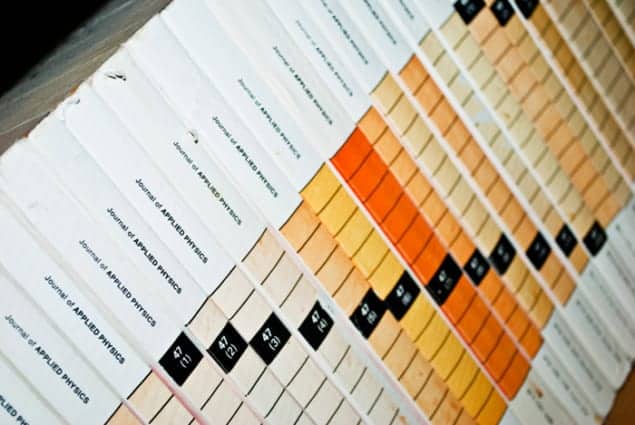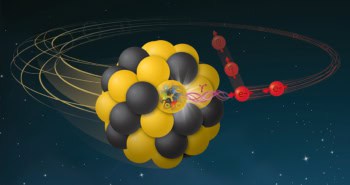
The UK physics community leads the world in the quality of its scientific output, but its global share of papers published has declined in line with that of some other wealthy countries. That’s the conclusion of a new report entitled The UK’s Performance in Physics Research that was released yesterday by Science-Metrix, which compared the number and quality of physics research papers published by scientists based in the UK with those from other scientific powerhouses such as the US, Japan and Germany. The report also scrutinized the output of up-and-coming countries such as China, India and Korea.
The report was commissioned by the Institute of Physics (IOP), which publishes Physics World, along with two leading funding agencies in the UK: the Engineering and Physical Sciences Research Council (EPSRC), and the Science and Technology Facilities Council (STFC). The good news for UK physics is that in 2009 the country had the highest “scientific impact” – in terms of papers cited in the three years following their publication – of the 10 most prolific publishing nations. Indeed, between 2002 and 2009, the UK’s scientific impact increased at an annual rate of about 1%. Just behind the UK in terms of impact are the US and Germany, with the US experiencing a steady decline from 2002, when it led the pack.
Drop in output
The study, however, finds that the UK’s share of the global output of physics papers fell from 5.1% in 2002 to 4.0% in 2012 – a decline mirrored by other advanced countries such as France, Germany and the US. This fall is attributed to a significant increase in output from emerging scientific countries, such as China and India. This steady growth in papers from these two nations does not, however, appear to coincide with a drop in the quality of research being done there, according to the report. Instead, the scientific impact of physics done in China and India has increased steadily since 2002 – albeit from relatively low levels.
The report also compares how physicists around the world participate in international collaborations. The study reveals that the number of collaborations involving UK physicists has grown at an annual rate of 1.8% between 2002 and 2011, with about 65% of papers by a UK-based physicist also having a co-author located abroad in 2011. This is nearly 15% greater than the overall figure for all UK academic disciplines. Not surprisingly, the US is home to the largest number of physicists that collaborate with scientists in the UK. Indeed, 24% of all UK collaborations involve US physicists, followed by Germany, France and Italy with 10%, 8% and 7%, respectively.
Perhaps worryingly for the UK physics community, the overall amount of physics done in the UK seems to be in decline. In 2011 the UK had the lowest number of physics papers as a proportion of the total national academic output of 25 leading countries. Furthermore, the annual growth in the number of physics papers published in the UK between 2002 and 2011 was 1.2%, which is much lower than the 2.1% growth in all UK academic papers.
Economic impact
The report goes beyond publishing data and looks at the economic impact of four sub-disciplines in which UK physicists excel: applied superconductivity and materials science; astrophysics and space science; cosmology, quantum field theory and particle physics; and imaging techniques and algorithms. The creation of spin-out companies, technology transfer to large computing and aerospace companies, and the development of new medical technologies are cited as some of the benefits of having expertise in these four areas.
Frances Saunders, president of the IOP, says that “the UK remains world leading in physics”. However, she adds that the dramatic growth of physics in nations such as China and India should serve as a warning to UK physicists. “The lead is ours to lose without internationally competitive levels of investment,” she says.
The report can be downloaded at http://www.iop.org/publications/iop/2014/page_63080.html.



